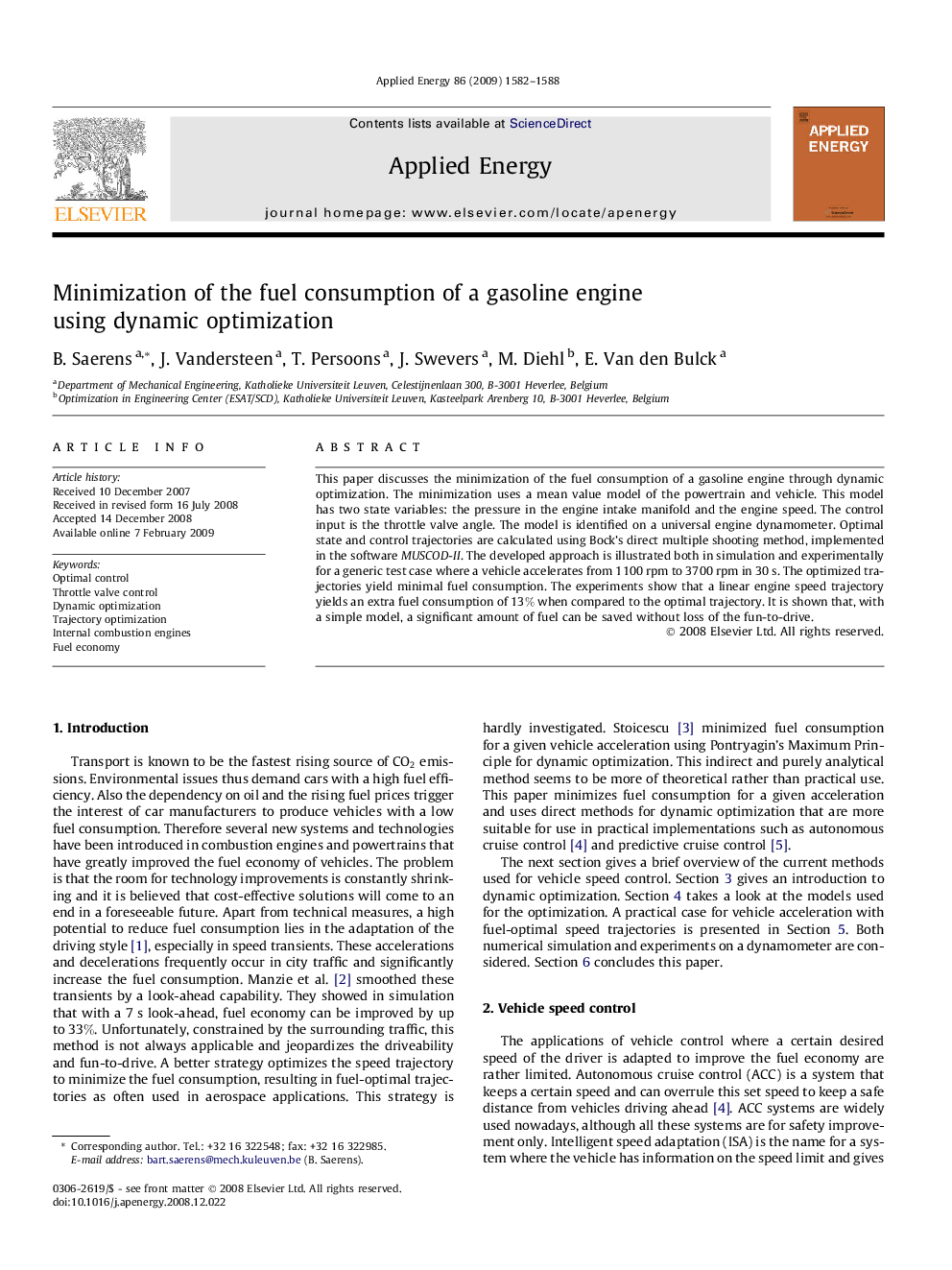| Article ID | Journal | Published Year | Pages | File Type |
|---|---|---|---|---|
| 244936 | Applied Energy | 2009 | 7 Pages |
This paper discusses the minimization of the fuel consumption of a gasoline engine through dynamic optimization. The minimization uses a mean value model of the powertrain and vehicle. This model has two state variables: the pressure in the engine intake manifold and the engine speed. The control input is the throttle valve angle. The model is identified on a universal engine dynamometer. Optimal state and control trajectories are calculated using Bock’s direct multiple shooting method, implemented in the software MUSCOD-II . The developed approach is illustrated both in simulation and experimentally for a generic test case where a vehicle accelerates from 1100rpm to 3700rpm in 30s. The optimized trajectories yield minimal fuel consumption. The experiments show that a linear engine speed trajectory yields an extra fuel consumption of 13%13% when compared to the optimal trajectory. It is shown that, with a simple model, a significant amount of fuel can be saved without loss of the fun-to-drive.
